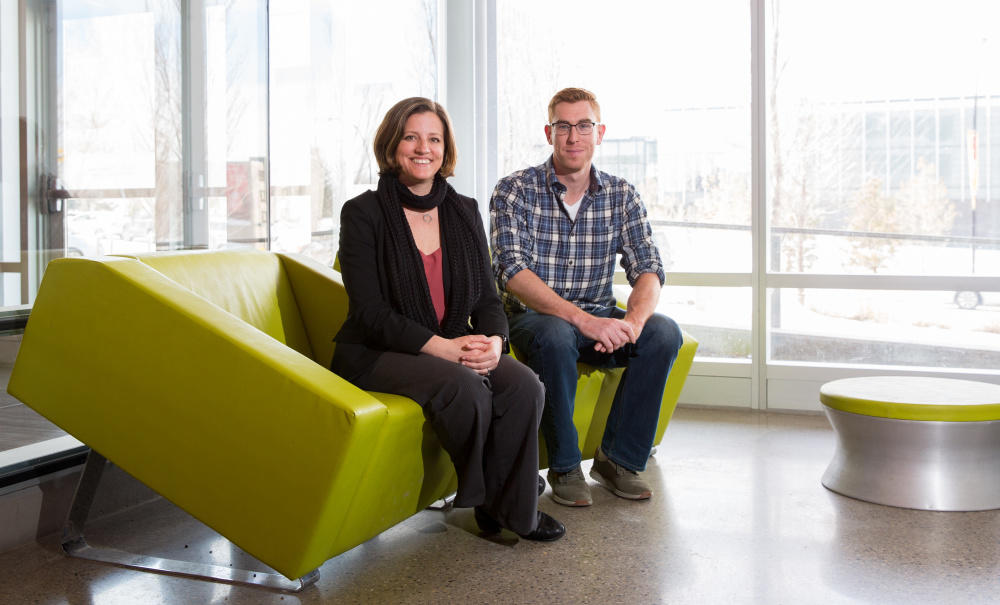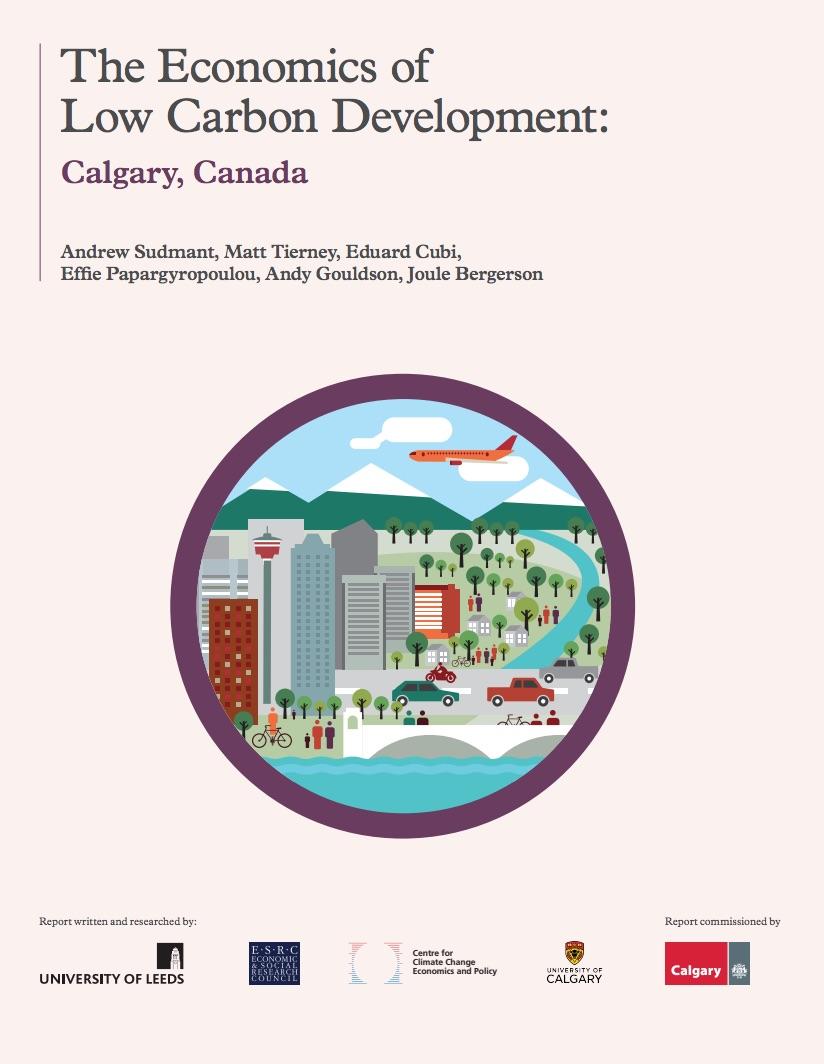April 6, 2018
This low-carbon plan comes with an economic upside

Joule Bergerson and Matt Tierney completed a low-carbon economic case study with the City of Calgary
Riley Brandt, University of Calgary
The debate around a low-carbon future typically assumes that choices benefiting the environment come with a price tag.
Researchers at the University of Calgary say it’s time to reframe that conversation. In plotting a course to meet The City of Calgary’s ambitious goal of reducing greenhouse gas emissions by 80 per cent by 2050, their research shows that — up to a point — the benefit of going low carbon will actually save money in many scenarios, be cost-neutral in others, and cost more in just a few.
“It started with The City of Calgary wanting to revisit their climate action plan in general,” says Joule Bergerson, professor in the Schulich School of Engineering and one of the authors of the report: The Economics of Low Carbon Development: Calgary.
“The City reached out to U.K. researchers in Leeds who had developed models for looking at the economics of climate change, and they in turn brought us in as local experts to provide context and data specific to this community,” Bergerson says. “The university’s partnership with The City of Calgary through the Urban Alliance was already productive and collaborative, so we fit naturally into the structure of the Leeds research process.”
Calgary was the first North American city where researchers took this approach, but the Climate Smart Cities team at the University of Leeds has completed similar analyses in cities around the world including Kolkata, Lima, and Birmingham. “The study was a great kickoff to a conversation about which options we are most likely to succeed at, and which ones stakeholders would prefer,” Bergerson says. The study was presented at the Calgary Climate Symposium in March.
Planning for an uncertain future
It’s clearly a challenging task. Imagine a project with a deadline over 30 years away that impacts most activities of everyday life (work, transportation, housing, etc.). Its success relies on current technology but leaves room for innovation, and the health of the city — the planet, really — depends on the outcome. How do you begin?
For one, Bergerson says, you get comfortable working with uncertainty and complexity. For the rest, you build models. “The method they developed was one of the impressive aspects of the Leeds research program,” says Matt Tierney, a master's student in the Department of Mechanical Engineering who worked with Bergerson on the report. “We built case models that would be representative of a series of buildings and vehicles, and from those base models extrapolate out to the city at large.”
“Thirty years in the future of course there are unknowns,” says Andrew Sudmant, Research Fellow in the Economics of Climate Smart Cities research program at the University of Leeds. “To give us an understanding of the future we look at the driving actors of emissions in the city including population, demographics, car ownership rates, the distances people are driving.
“These are all little dials, and you ask: does this turn up in the future? Does it turn down? And we put those all together,” Sudmant explains.

Joule Bergerson and Matt Tierney contributed to The Economics of Low Carbon Development: Calgary.
Calgary is unique, and uniquely placed to lead
The report, which will be issued in full shortly, contained several key findings, including that Calgary is unique in some ways, that small steps taken now have a big impact down the road, and that while there are choices that provide both an economic and an environmental return, with lofty targets there are also some tough choices ahead.
“One of the biggest things that jumped out in our findings particular to Calgary was that the hydrocarbon industry we have here creates different dynamics than you see in other cities,” Bergerson says. “In many cities, as energy prices go up, you get energy conservation. In Calgary it’s not the same.” Because in Calgary as energy prices go up, a population largely employed in the oil and gas sector typically has more money to spend.
Energy prices are just one of the many external factors that would impact the effectiveness of the proposed measures, Tierney explains. “The economic savings of, say, reduced natural gas used for heating are muted by low natural gas prices, while environmental benefits of electric vehicles are magnified by a greener grid,” he says. “Energy savings within the city will always come with benefits but the scale of those benefits depends on our province and economy.”
All the researchers are careful to point out that while a low-carbon future includes some investments that provide an economic return as well as an environmental one, and others that are cost-neutral, to reduce greenhouse gas emissions by 80 per cent over 2005 levels, Calgary will have to make significant investments.
“The report shows there is a huge opportunity for Calgary to be a leader in low-carbon action,” Sudmant says. “There is a period of time where we can be driven by economics and self-interest, after that it’s probably the case we need to make hard choices. Waiting is not an option. The best time to go low-carbon is now.”
Urban Alliance is a strategic partnership between The City of Calgary and University of Calgary to promote the seamless transfer of cutting-edge research between The City and the university, for the benefit of all our communities. Urban Alliance energizes connections between the people who make up our organizations, and encourages us to work together to find ways to make life better for all Calgarians.
Located in the heart of Canada's energy sector, the University of Calgary has built a reputation as a global leader in energy research and innovation. With a focus on our low-carbon future, diverse teams are also assessing the effects of energy-related processes while harnessing unconventional hydrocarbon resources through the Energy Innovations for Today and Tomorrow research strategy
